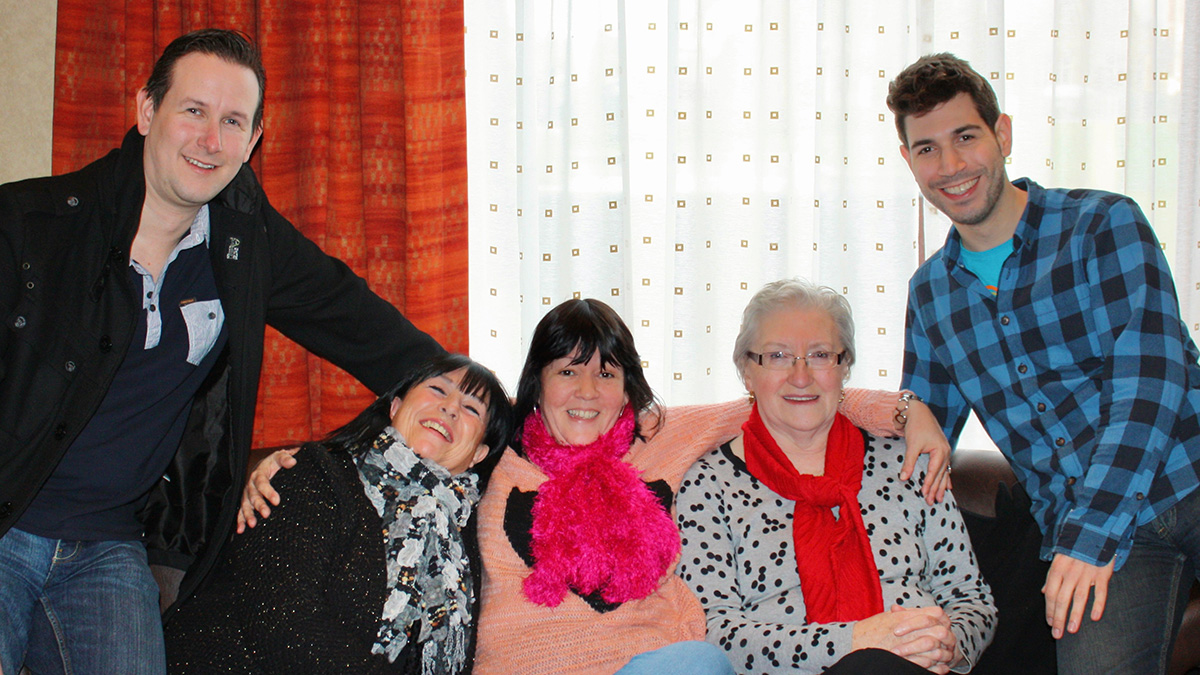Court Report
After a few days’ break, Doctor Steven Shafer resumed his testimony in the trial of Conrad Murray.
Dr Shafer continued with a description of his remarkable career as a doctor and an anaesthesiologist, with examples of his work printed in eminent periodicals concerning anaesthesiology, in particular Propofol.
He described its use in Intensive Care Sedation, when a patient is sedated for long periods of time, from days to weeks, when Propofol is used to keep the patient comfortable during procedures and treatments. He went on to describe briefly its use in MAC sedation, when a patient may need a small procedure under less deep sedation.
He also discussed, in detail, an article written in part by him, describing a voluntary study examining the difference a patient’s sex or weight makes to the effects of Propofol, followed by another article studying a patient’s age and the difference to the necessary dosage of the drug. In this he studied the dynamics, whether or not the power of the drug increases or decreases with the age of the patient. A final article was discussed where the doctor had researched the drug in intensive care medicine. The results were used to generate the dosages in the ICU.
Dr Shafer has also written articles and studied Lorazepam, Diazepam and other Valium type drugs. He confirmed that he had studied Lidocain, to link it’s dosage to another concentration using a device (computer) which calculated the correct dose.
All of the articles mentioned had been published and Dr Shafer admitted that his own personal research is the foundation of this field of study. He has written one hundred and sixty articles on the subject and published over fifty chapters in books on anaesthesiology. He has spoken at conferences worldwide, in China, Chile, Canada, Scotland and England and considers his work to be teaching doctors how to come up with models that work. (A model is a computer simulated effect of dosages of drugs, and how will the patient be affected.)
Dr Shafer considers his first and foremost work is practicing as a doctor and anaesthesiologist. Treating patients is the most important thin, stating; “Seeing patients is what I do!”
He had prepared for this case meticulously, for which he did not receive a fee, explaining that he never charged a fee for malpractice cases, as he would feel uncomfortable profiting from a medical misadventure. He had accepted this case as it was so public. He was concerned that the reputation of doctors and anaesthesiologists and the reputation of the drug Propofol would be damaged. He said he has been asked daily by his patients; “Are you giving me the drug that killed Michael Jackson?” He said “Patients should NOT need to ask that!”
Dr Shafer then began explaining the basic terminology of sedation with Propofol and had with him every necessary piece of equipment, which he showed to, and described for, the jury. From the 1000ml Saline bag through to the spike used to pierce the stopper on the drip and every step in inducing sedation was described. He showed a 100ml vial of Propofol and how it would be used as a drip or by syringe. He demonstrated the extraction of the drug from the vial into a syringe which would be attached to a port in the IV tubing and how the evidence shown to the jury had made it clear that a spike had been used rather than a needle. The hole in the equipment was far too large to indicate a needle’s use.
He was asked if he had evaluated Murray’s standard of care of Michael. He said that he had made a video (DVD) of the correct way to treat a patient when using Propofol. Doctor Orlando Hung in Halifax, Canada, had prepared the DVD for him to use as evidence in court. Entitled ‘The Correct Way To Sedate A Patient’ the DVD was played and paused in certain places whilst Dr Shafer narrated, step by step, in detail, each action taken by the staffing the operating theatre. Every piece of essential equipment laid out and tested. Multiple systems were in place to check the oral airway, the nasal airway, the throat, the trachea, and the lungs. It was essential, he said that every vital piece of equipment had been tested and was instantly available to the anaesthesiologist. He explained how vital each piece of equipment was, it’s use and the possible consequences if it were not to hand.
Having completed the preparation of the operating theatre, the next vital step was the patient assessment. Dr Shafer said the anaesthetist ALWAYS sees the patient before the procedure and performs a quick physical examination, of the airways, lungs, heart with no exceptions.
The next step is to get ‘INFORMED CONSENT.’ The patient must sign a document saying they agree to the treatment. Verbal consent is not acceptable and not recognised or valid.
The doctor then went on to describe actions taken in the event of any problem, such as cardiac arrest and the steps that must be taken to keep the patient alive.
At the end of the DVD, the court recessed for lunch.
When court reconvened, Dr Shafer spoke of the requirements and safeguards that are the responsibility of doctors anywhere and everywhere. The rules of anaesthesia have been meticulously established for everyone to follow rigidly. Even nurses and paramedics are trained in them.
Dr Shafer was concerned that Conrad Murray had given Propofol to Michael when he was allegedly dehydrated, exhausted, had been given other intravenous medications and was still sleepless. He had had large doses of Propofol over a long period of time and was obviously a complex patient therefore the required standards of care were essential at this time. Even if he had been given a very small amount of Propofol, these standards were still essential. He said there was no such thing as a little sedation!
In Michael’s case, none of the safeguards were in place. It is a doctor’s responsibility to be prepared for the worst eventuality.
In preparing for this case, Dr Shafer had identified multiple deviations by Murray from the expected standards of care. Some were minor, but most were at least serious, up to egregious.
Murray’s failings to give Michael the necessary correct care were discussed in detail, as they had been previously with other healthcare professionals, for example:
No back up assistance
Failure to call for help
The lack of the necessary equipment to perform airway procedures, EKGs, etc:
No drugs for use in an emergency
Failure to use the equipment he had like the ambubag and the blood pressure cuff
Not performing CPR correctly
It was Dr Shafer’s opinion that Murray had anticipated giving Michael more than 25mls of Propofol every night, as he had purchased 130vials of 100mls of Propofol, each of which must be discarded if not used within six hours of opening. This alone, said Dr Shafer, must mean that he was using that amount (100mls) every day.
According to the shipping records from Allied Pharmacy, Conrad Murray had received 130 vials of 100mls, and 125 vials of 20mls of Propofol, which Dr Shafer calculated to be 15.5 litres of Propofol for one individual…Michael! In addition, he had kept no records of any care he gave to Michael and that alone was unconscionable and legally incorrect. Dr Shafer added that even if Michael himself had told Murray not to keep records, California State law required him to keep them. There was no indication either for the paramedics or the ER staff at UCLA, of what Murray had given to Michael and he deliberately withheld the information from them. Murray was aware too that other doctors who had been treating Michael, if only from the presence of medications in Michael’s room. He needed to know about those treatments before he treated Michael himself and he should have refused to treat him if Michael had withheld information from him.
Dr Shafer said that before he gave Michael any medication he should have done an assessment. The only physical examination mentioned had happened months before he began the nightly Propofol. He should have asked if Michael was tired, pumped up, hungry or sick. He had no evidence to make an assessment. A Doctor/Patient relationship does not mean doing what the patient wants. It is meant to provide care in the best interests of the patient.
Again, in Dr Shafer’s professional opinion Murray had abandoned his medical judgment and this resulted in Michael’s death. He then recalled all the mistakes Murray had made.
Firstly, because there was no informed consent he had denied Michael his right to make an informed decision by not warning him of the consequences of Propofol incorrectly administered.
Secondly, he had abandoned him while under the influence of the drug by leaving him unmonitored and without back-up, not just for two minutes but probably for the period of the phone calls Murray made. With no alarms in place, he was distracted when Michael stopped breathing. Constant observations were necessary, with the necessary monitors being continuously checked.
Thirdly, he did not call 911! He needed advanced support immediately. He had no equipment, no-one else to help. When he became aware that Michael was not breathing, the first thing he did was leave a voicemail for Michael Amir. It was inconceivable, and completely and utterly inexcusable that he had not yet called for help.
Mr Walgren then asked Dr Shafer to make a series of assumptions.
1. To assume that Michael was alive, Murray left for two minutes, found him not breathing then called 911. Would he be alive today?
Dr Shafer answered that he would be alive, but with neurological injuries, because of the period without oxygen and the delay in calling the paramedics.
2. If Michael was found after leaving the room for two minutes and Murray ventilated him, what would be the result? Dr Shafer said “He would be alive and uninjured!”
The next evidence from Dr Shafer concerned Murray’s inept and unnecessary mouth to mouth resuscitation. Instead he should have tried to get air into Michael’s lungs, because his heart was struggling to get oxygen, He appeared to be clueless about the necessary procedures. Michael had a pulse, so he didn’t need to raise his legs. He was not treating what was needed. He gave Michael Flumazenil which would reverse the effects of the Lorazepam, Medazolam etc: Those drugs had been given hours before so did not require reversal. “Perhaps,” said Mr Walgren, “this indicated he had given Michael more Lorazepam.” The doctor agreed, saying “Yes, he knew he’d had a lot.” Murray had treated for a cardiac arrest, but should have treated a respiratory arrest, caused by Propofol. Dr Shafer said his behaviour was inexcusable in that he had not informed the paramedics or the ER doctors about the Propofol. A doctor’s duty, said Dr Shafer, is to tell the truth, the whole truth and nothing but the truth. In his opinion Murray had no understanding of Polypharmacy, or mixture of drugs. For example he had given Michael Lorazepam and Medazolam, which is essentially the same drug. Murray obviously had no understanding of these drugs and is this setting with so many variables, it was impossible to give a safe dose of Propofol.
Mr Walgren then asked Dr Shafer to consider the Chinese paper on the experiment with Propofol to treat insomnia. Dr Shafer had read the paper several times, reaching the conclusion that he would not have accepted the paper for publication as the evidence on the experiment was flawed. Extraordinary claims were made, which needed extraordinary proof, which was absent and said the paper bore no comparison to the case.
Mr Walgren itemised each of the seventeen egregious failings in standards of care in this case and Dr Shafer confirmed that altogether or alone each one would be likely to result in Michael’s death. Conrad Murray did not put Michael first, he put himself first in every instance.
Source: MJWN
 Est. 1998
Est. 1998











